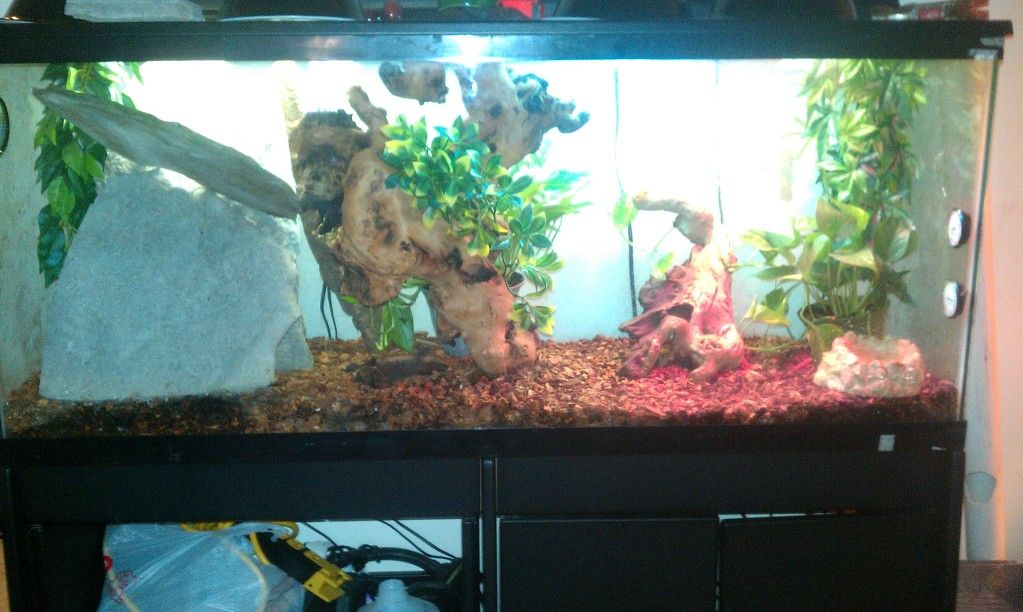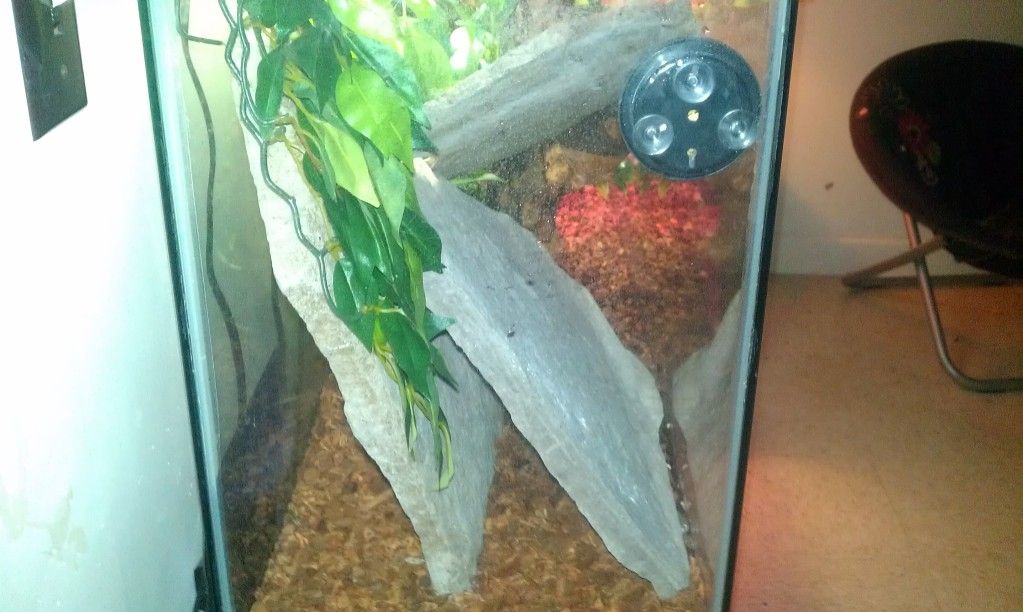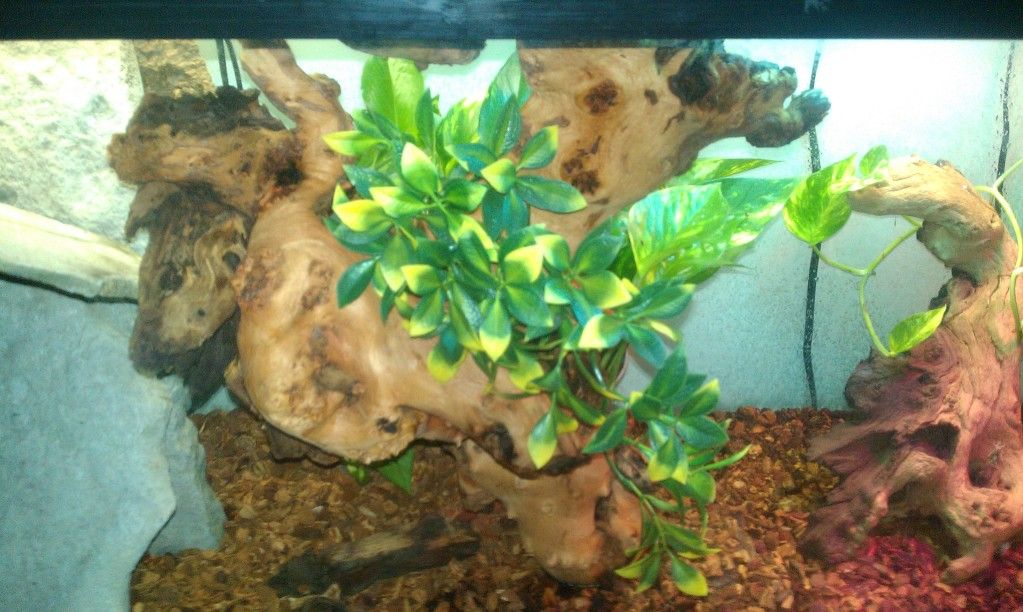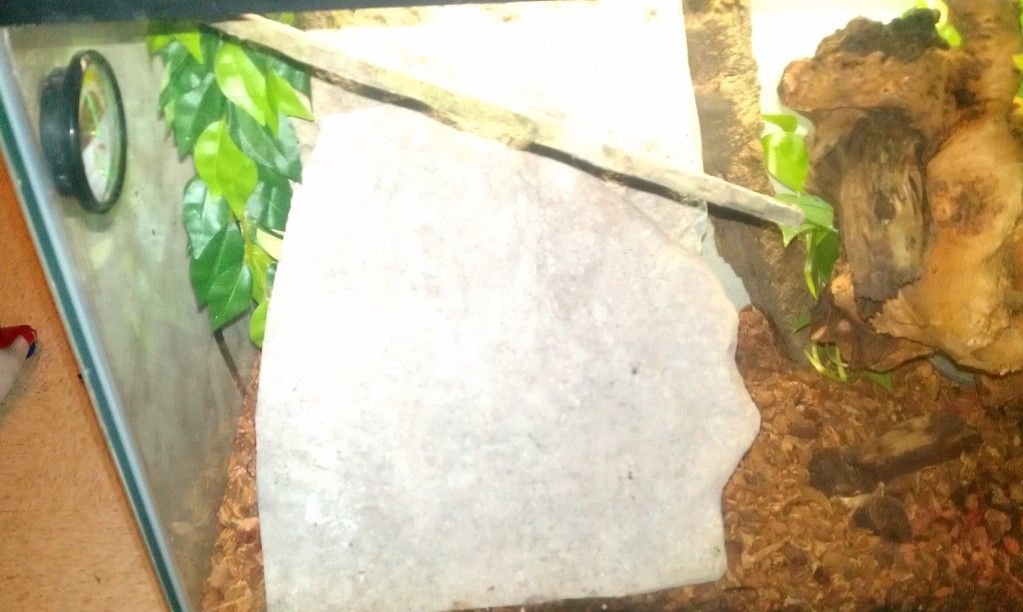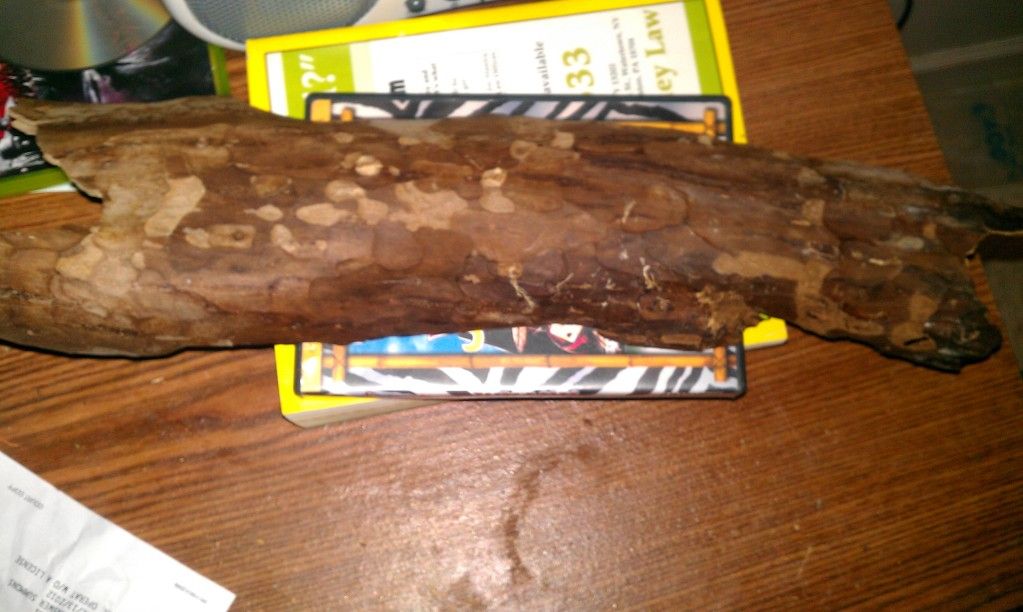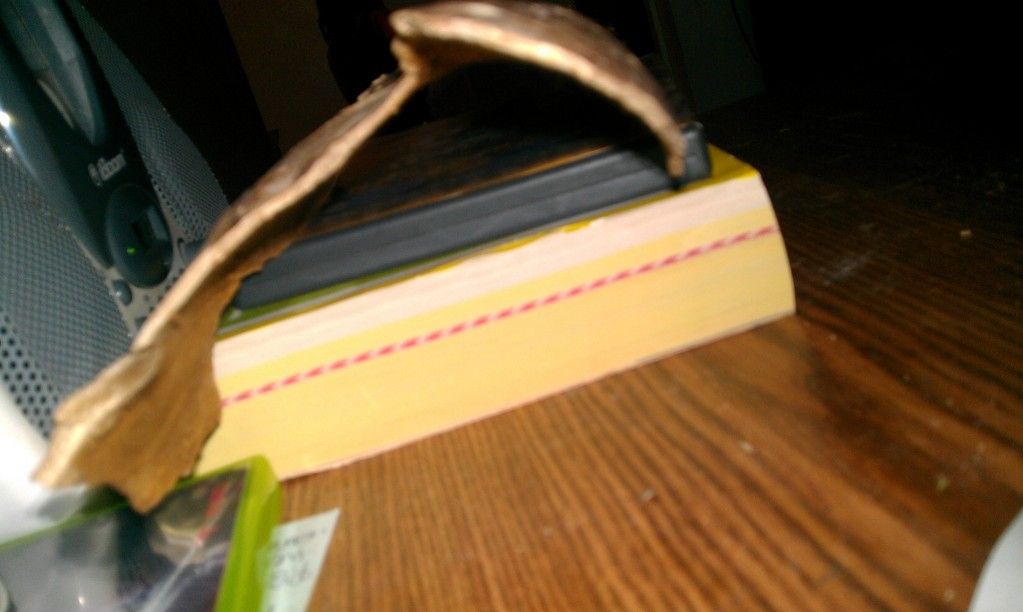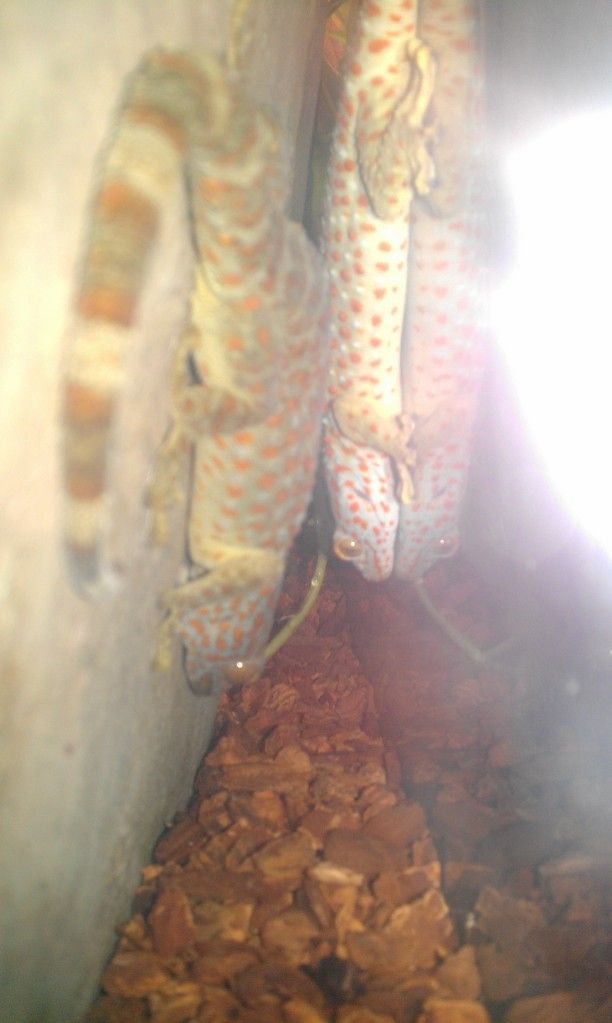You are using an out of date browser. It may not display this or other websites correctly.
You should upgrade or use an alternative browser.
You should upgrade or use an alternative browser.
my tokays' home (pic heavy)
- Thread starter Liddle
- Start date
Riverside Reptiles
Administrator (HMFIC)
Looking very nice. It would be even nicer if you turned the tank vertical though.
Liddle
New member
Looking very nice. It would be even nicer if you turned the tank vertical though.
I know gotta get that sometime.
billewicz
New member
Nice setup but careful with the bark
Hello, could you be more specific about your warning. As this forum looks to help folks understand how to avoid common mistakes and improve their reptile keeping experience. Some details would be helpful.
As a side note: I have over 150 enclosures for Tokay set-up exactly as described with the cork bark leaning against the slate, that is leaning against the side of the glass.
90% of my eggs are on the slate facing the bark, and the other 10% of our eggs are on the bark, facing the slate. 100% of both parents 'nest' in this area as do the offspring. This is the core structure(s) within our Tokay enclosures. The slate and the bark are sturdy enough to stand up to the movements of large Tokay, they stay resistant to fungus and rot, and are easy to clean. There is enough humidity within the hide/nesting area to produce very high hatch rates and one can observe them, and they you, without any disturbance.
Obviously there countless ways to house Tokay, as long as they meet their specific needs, it does not matter to me. I can say that I've suggested this set-up and it has had good results for several others as well.
All the best,
Michael
T-ReXx
New member
Nice setup but careful with the bark
Hello, could you be more specific about your warning. As this forum looks to help folks understand how to avoid common mistakes and improve their reptile keeping experience. Some details would be helpful.
As a side note: I have over 150 enclosures for Tokay set-up exactly as described with the cork bark leaning against the slate, that is leaning against the side of the glass.
90% of my eggs are on the slate facing the bark, and the other 10% of our eggs are on the bark, facing the slate. 100% of both parents 'nest' in this area as do the offspring. This is the core structure(s) within our Tokay enclosures. The slate and the bark are sturdy enough to stand up to the movements of large Tokay, they stay resistant to fungus and rot, and are easy to clean. There is enough humidity within the hide/nesting area to produce very high hatch rates and one can observe them, and they you, without any disturbance.
Obviously there countless ways to house Tokay, as long as they meet their specific needs, it does not matter to me. I can say that I've suggested this set-up and it has had good results for several others as well.
All the best,
Michael
Michael I could be wrong here, but I think this was in reference to the bark substrate, not the cork shelter. Bark substrates have been known to cause impactions in geckos, and I think the post was about being cautious the geckos don't ingest the substrate. I personally use a cocofiber/peat moss mix for my tokays and also dish feed, so substrate ingestion is a non-issue really, but if free feeding loose prey in an enclosure using reptibark or similar substrates with pieces small enough for the gecko to swallow there is a level of risk of them ingesting some and becoming impacted. I don't believe there was anything meant against using the cork bark shelter method.
billewicz
New member
Hey thanks,
I guess I don't see cork being used as a substrate but I would agree, it would impact . Especially if it were ground up, that could be certain death.
Tokay are pretty good about getting larger chunks out of their mouth. I've used Cyprus mulch for years without any trouble and it holds up longer than most everything else in the high humidity enclosures.
Thanks for the update. I could not quite figure out what the concern was.
All the best,
Michael
I guess I don't see cork being used as a substrate but I would agree, it would impact . Especially if it were ground up, that could be certain death.
Tokay are pretty good about getting larger chunks out of their mouth. I've used Cyprus mulch for years without any trouble and it holds up longer than most everything else in the high humidity enclosures.
Thanks for the update. I could not quite figure out what the concern was.
All the best,
Michael
Riverside Reptiles
Administrator (HMFIC)
I guess I don't see cork being used as a substrate but I would agree, it would impact . Especially if it were ground up, that could be certain death.
I think they were talking about the bark substrate in the OP's pictures.
I use a peat/sand mix for the actual base substrate and then use bamboo leaf litter on top of that. The leaf litter is easy to clean out quickly when it gets funky and it's big enough that the tokays won't swallow it, even if they get a mouthful. It also looks great and is about as natural as it gets as far as making a naturalistic viv for tokays.
T-ReXx
New member
you can see in the pics the cage has that reptibark stuff in it. I believe its a fir based bark not cork. Either way i agree that geckos are normally pretty good about spitting things out but the risk is there with this sort of substrate. I havent seen in in toks but i have seen a u. fimbriatus that died of impaction from reptibark so i do see the reason for concern. With tokays which are a lot more accurate hunters than uros i would suspect the risk would be smaller but i would still be cautious. i agree that i don't think Cyprus would pose the same level of risk.
Sent from my SAMSUNG-SGH-I777 using Tapatalk 2
Sent from my SAMSUNG-SGH-I777 using Tapatalk 2
billewicz
New member
:yikes::yikes:Tokay hit their pray really hard and will take a mouthful of substrate with it. And then they work really hard at getting the mulch to fall out.
I do not like reptibark because it sours fast and turns nasty in our high humidity enclosures. Even when the substrate is allowed to dry out daily, it's funky in a really bad way! (Where is the Mr. Yuck Face?)
I do not like reptibark because it sours fast and turns nasty in our high humidity enclosures. Even when the substrate is allowed to dry out daily, it's funky in a really bad way! (Where is the Mr. Yuck Face?)
Liddle
New member
what's the best you've found so far?:yikes::yikes:Tokay hit their pray really hard and will take a mouthful of substrate with it. And then they work really hard at getting the mulch to fall out.
I do not like reptibark because it sours fast and turns nasty in our high humidity enclosures. Even when the substrate is allowed to dry out daily, it's funky in a really bad way! (Where is the Mr. Yuck Face?)
T-ReXx
New member
i use hydroton topped with a peat-coco fiber mix topped with oak leaf litter in mine. As Michael said we all have different methods. I have to agree i don't like reptibark either. It does break down quick and imo does pose an impaction risk. I also think with bark mixes there is always a risk of some cedar making it into the bag, and cedar as known is toxic to reptiles.
Sent from my SAMSUNG-SGH-I777 using Tapatalk 2
Sent from my SAMSUNG-SGH-I777 using Tapatalk 2
Liddle
New member
I think they were talking about the bark substrate in the OP's pictures.
I use a peat/sand mix for the actual base substrate and then use bamboo leaf litter on top of that. The leaf litter is easy to clean out quickly when it gets funky and it's big enough that the tokays won't swallow it, even if they get a mouthful. It also looks great and is about as natural as it gets as far as making a naturalistic viv for tokays.
Did you mix this yourself? What kind of sand just a reptile sand?
Riverside Reptiles
Administrator (HMFIC)
Yes, I mix it myself. I just use basic play sand from Home Depot.


